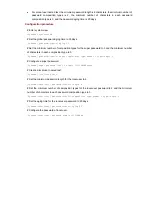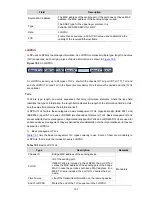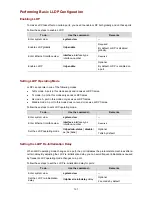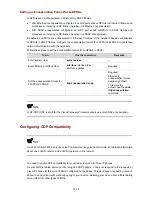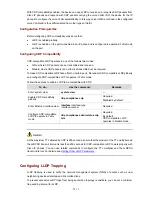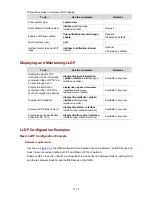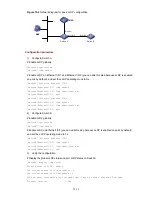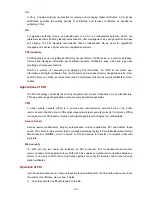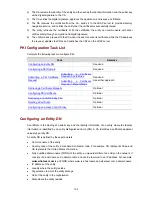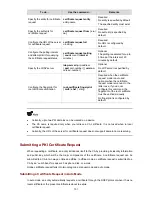
72-8
Enabling LLDP Polling
With LLDP polling enabled, a device checks for local configuration changes periodically. Upon detecting
a configuration change, the device sends LLDP frames to inform the neighboring devices of the change.
Follow these steps to enable LLDP polling:
To do…
Use the command…
Remarks
Enter system view
system-view
—
Enter Ethernet interface view
interface interface-type
interface-number
Required
Enable LLDP polling and set
the polling interval
lldp check-change-interval interval
Required
Disabled by default
Configuring the TLVs to Be Advertised
Follow these steps to configure the LLDPDU TLVs to be advertised out the specified port or ports:
To do…
Use the command…
Remarks
Enter system view
system-view
—
Enter Ethernet interface
view
interface interface-type interface-number
Required
Configure the TLVs to be
advertised
lldp tlv-enable
{
basic-tlv
{
all
|
port-description
|
system-capability
|
system-description
|
system-name
} |
dot1-tlv
{
all
|
port-vlan-id
|
protocol-vlan-id
[
vlan-id
] |
vlan-name
[
vlan-id
] } |
dot3-tlv
{
all
|
link-aggregation
|
mac-physic
|
max-frame-size
|
power
} |
med-tlv
{
all
|
capability
|
inventory
|
location-id
{
civic-address
device-type country-code
{
ca-type ca-value
}
&<1–10>
|
elin-address
tel-number
} |
network-policy
|
power-over-ethernet
} }
Optional
By default, all types of
LLDP TLVs except
location identification
TLV are advertisable.
Configuring the Management Address
The management address of a device is used by the network management system to identify and
manage the device for topology maintenance and network management. The management address is
encapsulated in the management address TLV. LLDP encodes management addresses in numeric
format in management address TLVs.
Make sure that a neighbor also encodes its management address in numeric format to guarantee
normal communication with the neighbor.
Follow these steps to configure a management address to be advertised on a port:
To do…
Use the command…
Remarks
Enter system view
system-view
—


